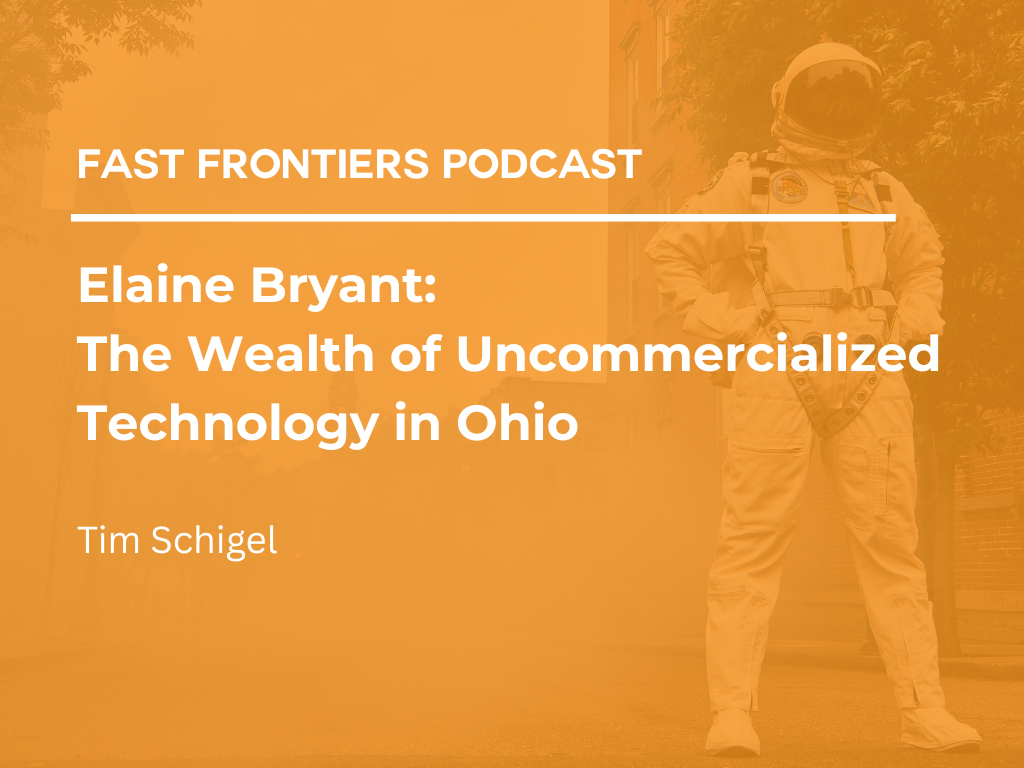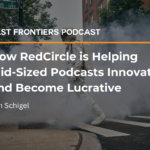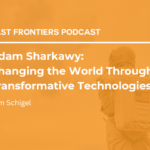We were fortunate to have Elaine Bryant, the Dayton Development Coalition’s executive vice president for aerospace and defense, join us for a recent Fast Frontiers podcast. From the start of our conversation, you could sense how much Elaine loves her current role, a role that her prior military service has served to elevate (Elaine is a 20-year air force vet).
What is the Dayton Development Coalition? Elaine summarized it as “a non-profit economic development for the 14-county region in Dayton, [one] of six network partners with JobsOhio— which is the state’s economic development entity—[funded by] proceeds from the liquor industry.” Thanks to this partnership, the coalition is able to help businesses in the state grow and also help attract new companies and industries to the neighborhood.
How Economic Development and the Military Are Connected
For her role as the Executive Vice-President for Aerospace and Defense, Elaine’s focus area is on the military side, specifically the defense applications and all the work being done at WrightPatterson Air Force Base, home of the Life Cycle Management Center, the Air Force Research Lab, and many other organizations. According to Elaine, “It’s really fun to be able to partner that private side with the defense side in order to help accomplish our national security objectives.” However, she does come across many people puzzled about how economic development relates to the military.
Elaine instead loves to educate people about how interconnected the two are. “When you think of national security, we’re talking about our economy,” she explained. “They’re not just talking about the fighter jets, and dropping bombs, and the weapons systems. Our national security is our country’s ability to be able to be safe, secure it, and all those things, and if our economy is vulnerable, then that presents that national security risk. So, in looking at the projects and the work that the Air Force Research Lab does, they’re very much interested in commercial viability because those are the things that are going to be if they’re started at the labs, they’re researched on. And then we have partnerships at the universities, partnerships with industry partners. Then we can transition that technology to them and let them go and commercialize it, [and] let them make it part of the economy.”
And while it’s a little like opening Pandora’s Box to try to detail all that’s currently being done in Dayton—and beyond—we covered a lot of ground in one podcast conversation.
Technology’ Potential Beyond Silicon Valley
Among the many topics we discussed that aligned with the theme of interconnectedness in our world, was that we are now seeing new frontiers opening up every day. They allow us to reach beyond boundaries that before seemed limited by location and other circumstances. For example, according to Elaine, there is so much great uncommercialized technology available— you just need to know where to look.
Elaine shared that one piece of the puzzle that’s been a struggle concerning technology, namely “taking the technologies, transitioning them, making them commercially viable, and then transforming them in terms of application, if it’s needed for a military use.”
Another struggle is getting the global powers on board with wrapping their minds around the idea that goldmines of potential are available all across the world, not just found in the traditional tech mecca of Silicon Valley.
The way it appears now is there is all of this supply, and the demand side is currently represented by the entrepreneurs that know how to take fundamental technology and apply it commercially, and potentially dual-use, commercially, as well as in federal or military applications. However, all of them seem to keep gravitating to the West Coast enclave of Silicon Valley.
Partnerships and Collaboration Are Key to Innovation
So how can we foster more innovation and attract more of these entrepreneurs—or as I like to call them, window shoppers—to come in and work with groups to find exciting new technologies yet to be commercialized? Elaine knows Ohio has plenty to offer and hopes people will consider how much there is to cultivate and discover in their backyards. “We need partnerships, [and] we have them in the labs, but [we need] partnerships with those entrepreneurs. I think we have lots of partnerships with universities and some other folks, but I think we need to increase the partnerships with those windows shoppers and allow them to see what we do now.”
Beyond establishing partnerships, efficient collaboration is also at the top of the list of necessities. Again, it is all interconnected. A collaboration and fusion of entrepreneurs working with the universities (or whoever) could move this exciting initiative forward.
The good news is that with the wealth of applications in manufacturing and the military, the potential overlap is promising. The big question is: How do you create this translation layer between the industries?
Elaine explained, “I think the dialogue is there, [and] I think the will is there. I still think that there’s a lot to overcome.” Elaine shared that a culture change, which “takes time,” is a key factor for overcoming this—and that’s just to start.
But Elaine is hopeful, and again, undaunted. “I think the leadership in the Air Force and Department of the Air Force is ready to take that on, but it’s going to require a culture change from a very large bureaucracy that hasn’t always operated that way, and it’s bringing in a whole new set of players.”
She added, “We’re used to playing with Lockheed and Boeing and the big companies, [not] the mom and pop, and the guy out of his garage doing work, and that’s a shift.”
Elaine admitted that “there are definitely some challenges and hurdles we still have to overcome.” But she was adamant that “it’s the way to go in terms of fulfilling the needs, and I always go back to national security and our economy, [and how] we want those technologies out. We want our entrepreneurs to develop them and work on them, and make them successful before folks from other countries do.”
To hear more insights from Elaine, listen to the full podcast here



